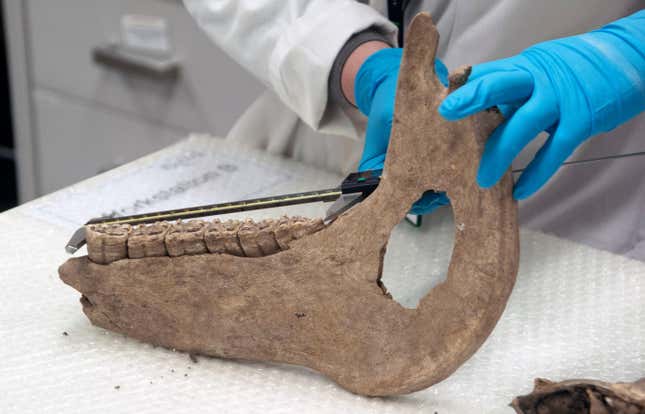
A team of zooarchaeologists in the United Kingdom recently analyzed the bones of centuries-old warhorses to determine their size, finding that they were actually of a surprisingly small stature.
The researchers examined 1,964 horse bones from the 4th century to the mid-17th century, from 171 different archaeological sites. They found that many warhorses were probably no more than pony-sized compared to modern horses. The team’s results were published in the International Journal of Osteoarchaeology.
Oliver Creighton, an archaeologist at the University of Exeter and co-author of the paper, said in a university release that “the warhorse is central to our understanding of medieval English society and culture as both a symbol of status closely associated with the development of aristocratic identity and as a weapon of war famed for its mobility and shock value, changing the face of battle.” But apparently that horse that changed the game had an outsize impact, given its petite size.
The team noted that many different horses could be considered warhorses; there were destriers, often used in tournaments, but also rouncies and trotters, which covered long distances in military campaigns. Once the bones are in an archaeological context, it can be difficult to tell warhorses from ordinary horses.

“There has been much debate amongst archaeologists and historians about this issue for years,” Alan Outram, an archaeologist at the University of Exeter, wrote in an email to Gizmodo. “Whilst the texts refer to the ‘Great Horse,’ they don’t actually say what that means, and that has been understood largely in relation to modern equivalents that are 17/18 hands high. The minimum for a police horse here is 16.2 hands.”
“Many films and museum displays have assumed such steeds, and that is what is in the popular imagination. Yet the archaeological record hinted that the animals were generally much smaller,” Outram added. “Indeed, none in the almost 2,000 we studied would be able to be modern police horses. It is likely that destriers were still relatively larger than normal horses (thus relatively ‘great’), but quite small by modern standards.”
Horses are measured by how many hands high they are at their withers—where the neck meets the shoulders. The 13th century is when horses 16 hands high first begin to appear in the archaeological record. But it wasn’t for another century or so that horses became draft sizes (draft horses are famously the big creatures used to haul carriages and other heavy loads.)
In media, the researchers note, shire horses, a type of draft horse, often play the role of warhorses. But shires stand at 18 hands high at their withers, making them much larger than actual warhorses were. The researchers found that horses of even 15 hands high would have been very rare, even when the royal stud network was at its zenith.
The researchers knew the specimens they examined were adult horses because they looked at fused bones, which occur when the animal’s growth stops. Some of the smallest horses were about the size of donkeys, according to the paper, while on average the horses from Roman times to the post-Medieval era were slightly smaller than mules. With the agricultural revolution, horses were bred more intensively, and larger animals began to appear.
Now, the team is studying ancient DNA of horse remains and looking at morphological changes in the animals’ bones, which develop depending on the type of work the horse is doing. Future analysis of old DNA could help archaeologists understand how breeds of horses developed over the centuries, the researchers noted. And while size among Medieval horses varied, the image of a calvary riding in on donkey-sized horses is a lasting one.
This article was updated to include comments from Alan Outram.
More: Australia Plans to Kill Thousands of Feral Horses—But Scientists Say It Isn’t Enough